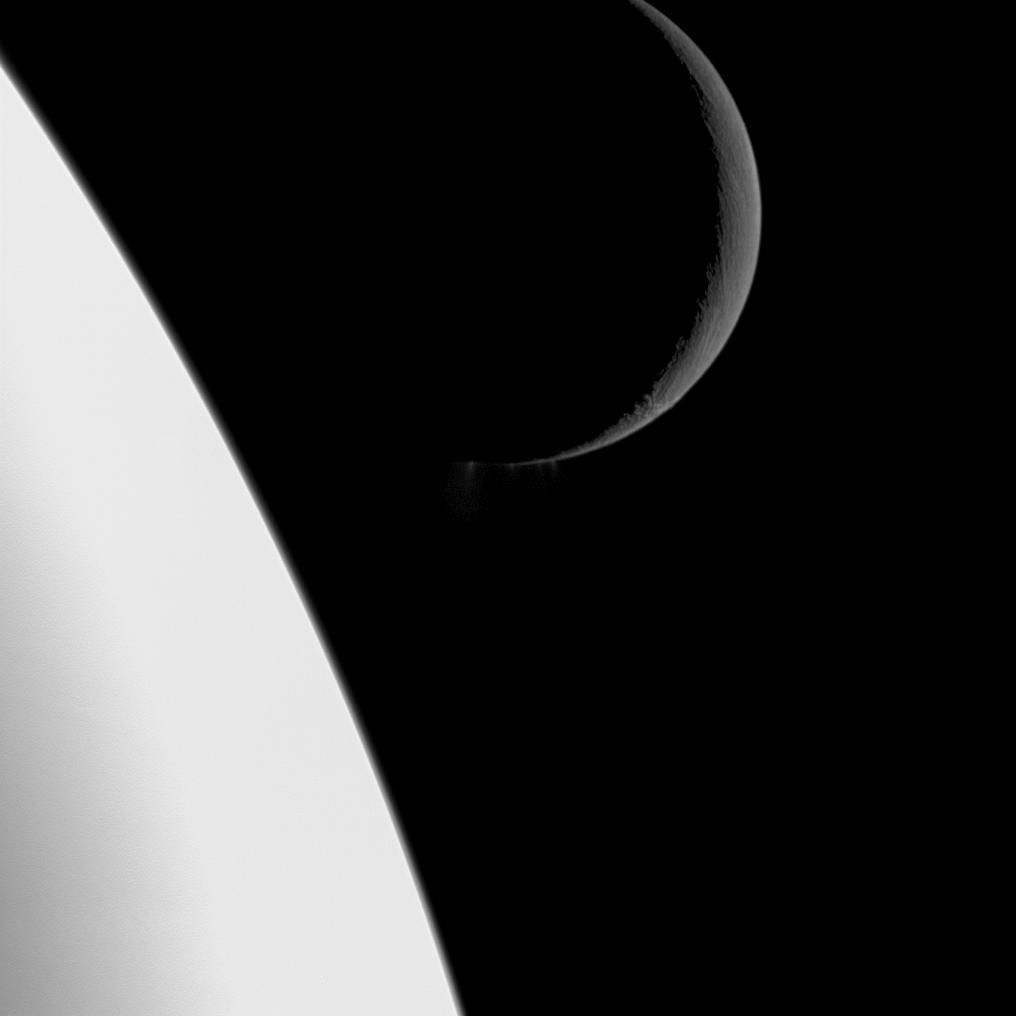Peaceful Portrait

| PIA Number | PIA11683 |
|---|---|
| Language |
|
At first glance, this scene simply shows the bright crescent of Saturn’s moon Enceladus at top right, composed against the stability of its parent planet resting at the bottom left. But a closer look at the center of the image reveals a dramatic surprise: plumes of water ice spew out from the famed fractures known as "tiger stripes" near the south pole of the moon.
This image and others showing the geology of the moon's terrain were obtained on Nov. 21, 2009, when NASA’s Cassini spacecraft flew close to Enceladus (see Enceladan Tectonics
and Baghdad Sulcus in 3-D). Dramatic, close-up images of the plumes were also captured during the flyby (see Bursting at the Seams). Cassini scientists continue to study the evidence as to whether reservoirs of liquid water exist beneath the surface of the moon. See Baghdad and Cairo Sulci on Enceladus
and Jet Blue to learn more.
Although it may appear that Enceladus (504 kilometers, 313 miles across) is in the background here, the moon actually is closer to the spacecraft than Saturn is. This view looks most directly toward the side of Enceladus that faces away from Saturn. North on Enceladus is up and rotated 1 degree to the left.
The image was taken in visible light with the Cassini spacecraft wide-angle camera on Nov. 21, 2009. The view was obtained at a distance of approximately 17,000 kilometers (10,000 miles) from Enceladus and at a sun-Enceladus-spacecraft, or phase, angle of 145 degrees. Image scale at Enceladus is 974 meters (3,195 feet) per pixel.
The Cassini-Huygens mission is a cooperative project of NASA, the European Space Agency and the Italian Space Agency. The Jet Propulsion Laboratory, a division of the California Institute of Technology in Pasadena, manages the mission for NASA's Science Mission Directorate in Washington. The Cassini orbiter and its two onboard cameras were designed, developed and assembled at JPL. The imaging team is based at the Space Science Institute, Boulder, Colo.
For more information about the Cassini-Huygens mission visit http://www.nasa.gov/cassini and http://saturn.jpl.nasa.gov. The Cassini imaging team homepage is at http://ciclops.org.
Credit: NASA/JPL/SSI
